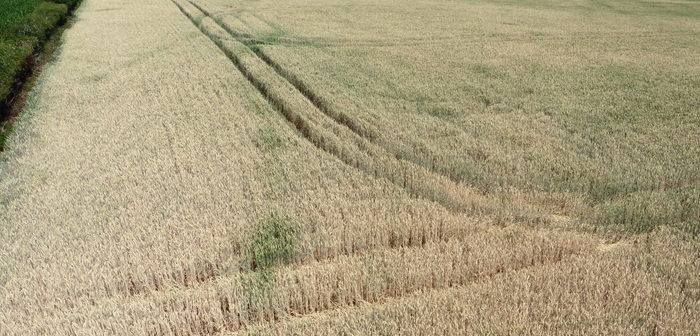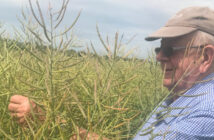Cereal growers facing yield losses due to the long-term dry conditions have been advised to consider alternatives to a conventional dry harvest before the drought wipes out more of their crop.
While some winter barley may have already been harvested, winter wheat, and some spring-sown crops – many of which were drilled late and then hit by a cold, wet spring – are now suffering from further stress as the hot, dry weather continues.
These conditions are diminishing the crop every day, rather than filling the grain, so many farmers are anticipating even lower yields as time ticks away.
“For every day without rain and with continued high temperatures, the grain harvest gets smaller and smaller,” says Andy Strzelecki, technical director with feed preservation specialists, Kelvin Cave Ltd. “If growers leave their crops in the ground until full maturity, they could be harvesting little more than budgie seed!”
He therefore advises producers to consider harvesting at the earliest opportunity, and while the grain is ‘firm and cheesy’.
“Cereals harvested at this stage – usually between 25% and 45% moisture – can be preserved easily by crimping, and the earlier harvest will minimise disease losses, shrivelling and loss of grain,” he says.
“In any year, crimping produces a higher dry matter yield per hectare than a dry harvest because
it avoids these losses, but in conditions like those we are seeing this summer, the relative benefit of the earlier harvest will be even greater,” he says.
The crimping process involves the rolling of early-harvested cereals through a crimping machine to expose the carbohydrate and protein, and the application of a preservative. It is then clamped, consolidated and sheeted, in much the same way as silage, and so requires no specialist equipment for most producers.
“A further advantage is that crimped cereals are safer to feed in quantity to ruminants than dried rolled grain, and they also result in better performance,” he says.
However, whilst Mr Strzelecki advocates crimping where growers are able to use or sell their grain as concentrate feed, he says in some instances a better option will be to turn their cereal crops into wholecrop silage.
“The choice will depend on each farm’s circumstances, the severity of the drought and the amount of forage in store,” he says. “Many livestock producers started this season with completely depleted forage reserves and – while they may have taken reasonable first and second cuts of grass silage – they are seeing little regrowth for either grazing or subsequent silage cuts.
“If they are in this position it may be more of a priority to replenish their stocks of forage, so their preferred option could be to make wholecrop silage. Whichever option is taken, the key objective should be to harvest cereals before the continued drought wipes more from the farm’s bottom line,” he says.
For further information on crimping and effective wholecrop silage preservation please see the boxes below, visit the Kelvin Cave website on www.kelvincave.com or ring the office on 01458 252281.




